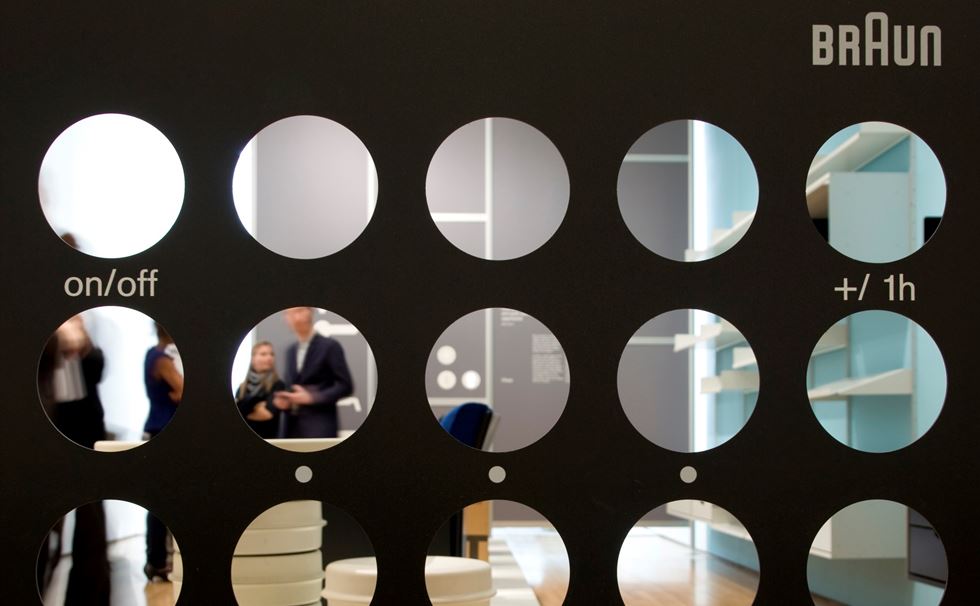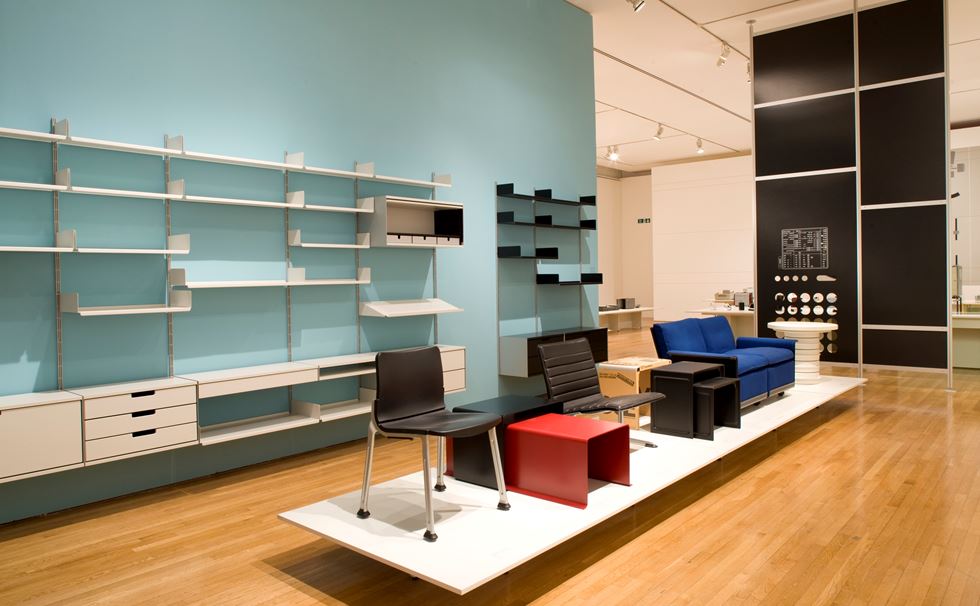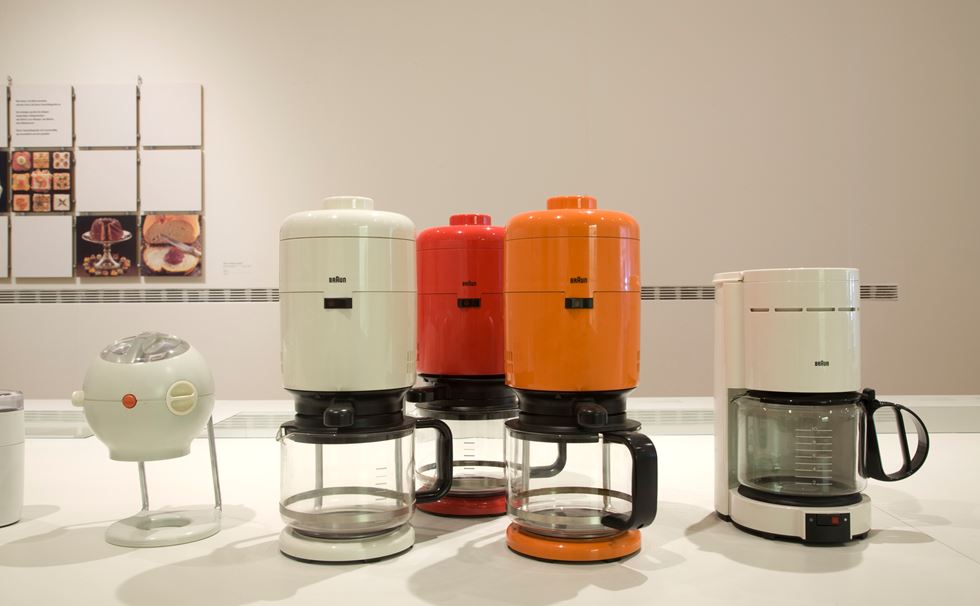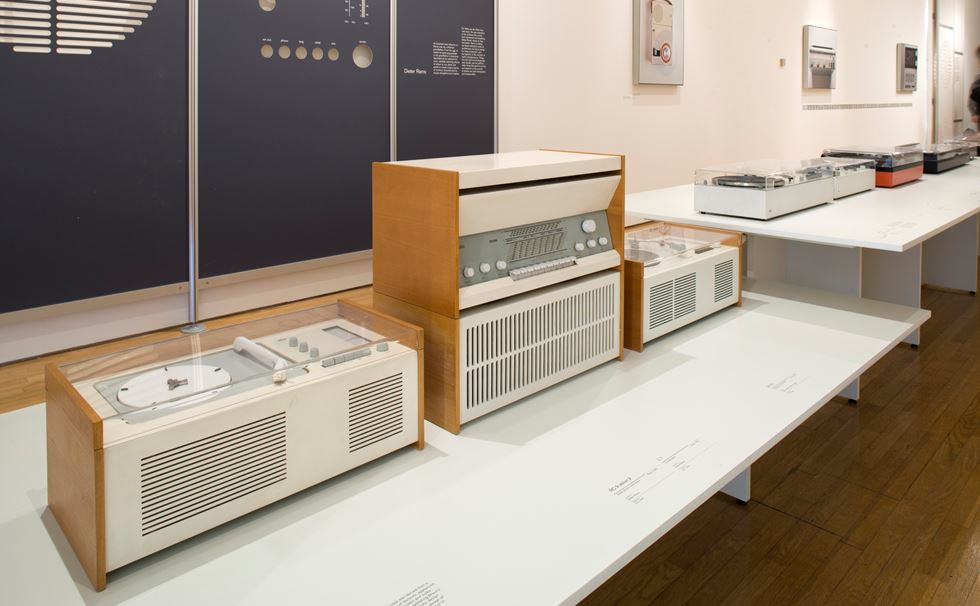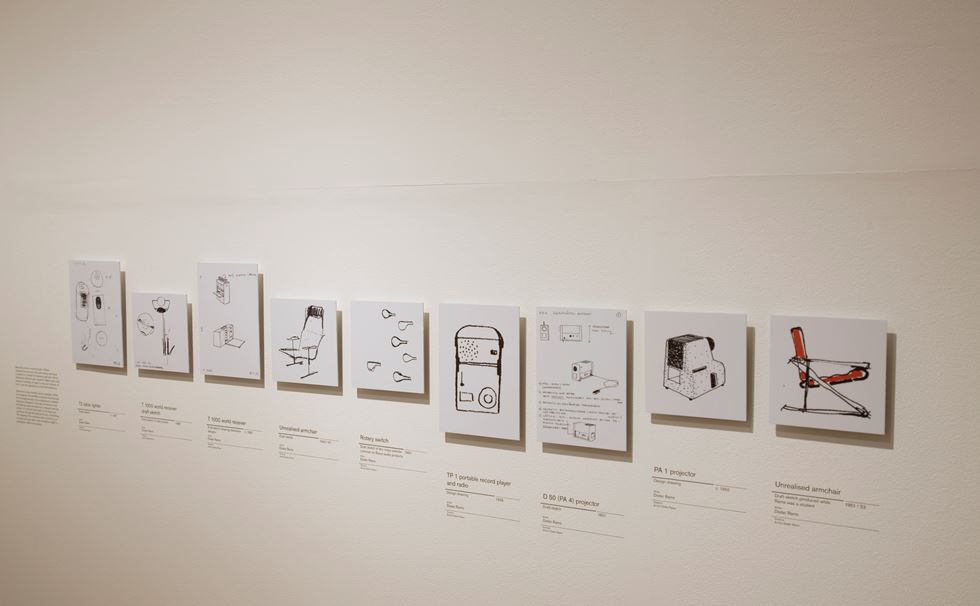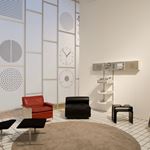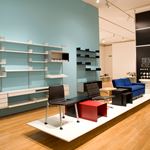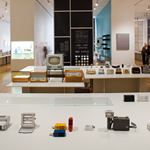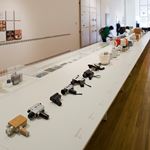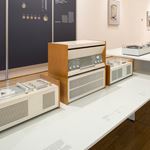Profile
Dieter Rams
As head of design at Braun, the German consumer electronics manufacturer, Dieter Rams (1932-) emerged as one of the most influential industrial designers of the late 20th century by defining an elegant, legible, yet rigorous visual language for its products.
Formative Years
Dieter Rams was born in Wiesbaden, Germany, in 1932. As a teenager he loved to watch his grandfather who worked as a carpenter. During those formative years Rams absorbed his grandfather’s ways of thinking about work and craft, which Rams credited as being extremely influential for his own development as a designer. In 1947, at sixteen years of age, Rams began a course in Interior Design at the newly reopened Handwerker Kunstgewerbe Schule, in Wiesbaden. However, after only two semesters, he interrupted his studies for a three-year carpentry apprenticeship. When he returned to the school in Wiesbaden he became interested in architecture, influenced by professors and lecturers such as Dr. Söder, Hugo Kϋckelhaus and Professor Haffenrichter. Having graduated from the course with distinctions, in 1953 he joined Otto Apel’s architects’ office in Frankfurt. Soon afterwards, in the summer of 1955, Rams left the company for a position as architect and interior designer at Braun.
Braun
Founded in Frankfurt in 1921 by the engineer Max Braun, the company had soon gained a sound reputation for engineering and for developing new products, including electric shavers, kitchen utensils and the first combined radio and record player. After Max’s death in 1951, his sons Artur and Erwin Braun took charge and repositioned Braun to benefit from the expansion of the post-war consumer electronics market. It was a time of rapid technological change when manufacturers were harnessing the engineering advances made in the defence industry during World War II to develop new electronic products for consumers. That was also a time of changing taste. The first wirelesses, gramophones and television sets had been hidden inside wooden cabinets to resemble traditional furniture, but the new generation of post-war consumers had lost their parents’ taboos about technology, which they saw as an exciting symbol of progress. The Braun brothers continued with the production of radio and phone sets, shavers and kitchen utensils initiated by their father. However, having realised that the styling of their products needed to become more sophisticated, in 1954 they asked the tutors of the recently founded Hochschule für Gestaltung (Ulm School of Design) to advise them on product design. Hans Gugelot was put in charge of designing radio and phone sets; Olt Alcher designed trade fair exhibition stands and communications systems for Braun, and Fritz Eichler dedicated his efforts to making advertising spots.
Rams’ Early Days at Braun
When he arrived at Braun, Rams applied his architectural skills to the design of exhibition sets and offices, but became increasingly interested in products. Rams wrote his account of his early years at Braun in an open letter to Erwin Braun in 1979. In the letter, he details his introduction to design and his experience working among talented and engaging people at Braun. Initially Rams worked on a number of different projects for the company, from being involved on a project for a new showroom pavilion for the medical department, to working on Erwin Braun’s own house in Königstein. During this time he got an in depth understanding of how the company operated, developing good relationship with the various teams at Braun.
In 1956 Rams finally took part in the development of a product from beginning to end. He worked with the Ulm tutor Hans Gugelot and his team, plus his colleagues at Braun on the development of the SK4 radio and record player. Abandoning the traditional wooden cabinet, they devised an unapologetically industrial metal case for the SK4 with two pale wooden sides. The operating panel was positioned on the top next to the turntable, rather than hidden away at the side. Originally the cover was to have been made of metal, but it vibrated too much in tests and was replaced, upon Rams suggestion, with transparent plastic which exposed the mechanics of the record player. Critics who had nicknamed the SK4 ‘ Snow White’s coffin’ thought people would be repulsed by the sight of electrical apparatus, but instead consumers considered it chic. Transparent lids became an industry standard and Rams became a name to watch.
Developing a Coherent Design Vision
Rams refined the design language he and Gugelot had adopted for the SK4 in the following year’s Atelier 1 hi-fi system and L1 loud speakers. Until then stereo systems had consisted of single units with integrated speakers, but Rams separated the speakers to make the receiver unit more compact. Subsequent developments in stereophonic technology ensured that this too soon became a standard. Determined to develop a coherent ‘family’ of products for Braun, Rams designed the Atelier 1 and L1 in the same proportions as the SK4. Consequently they could be used together with the L1 being added to the SK4 to amplify its sound. He then placed the L2 speaker on a slender metal stand – another innovation which was swiftly copied by Braun’s competitors.
Not only was Rams determined to ensure that Braun’s products were easy to use, he wanted people to enjoy using them. This meant that each audio product had to be perfectly attuned to the type of music which was popular at the time. As musical taste changed throughout the 1960s, with the growing popularity of rock, pop, folk and then electronic music, Braun’s engineers constantly strove to adapt. When the LE1 electrostatic loudspeaker was launched in 1960, on the eve of the pop revolution, musical taste was still fairly conventional and the engineers’ objective was to produce a clear, transparent sound for jazz and classical music. Rams covered the whole front of the speakers with super-light membranes as a visual allusion to the clarity of the LE1’s sound while presenting it as a proud symbol of engineering innovation.
An Influential New Design Director
In 1962 Rams was appointed director of Braun’s team of young designers. Having established its own design resource, the company became progressively less reliant on advice from the Ulm tutors. Instead Rams divided the responsibility for the development of different products among the young designers in his team. Gerd A. Müller was responsible for kitchen appliances, Roland Weigend for scales, model-making and product graphics, while Rams concentrated on radios, record players, torches and projectors.
Among the most important technical advances in consumer electronics during the 1960s was the development of new transistor technologies. By replacing the large, hot radio tubes which, until then, were required to produce high quality sound, transistors enabled Braun to develop smaller audio products with large top surfaces on which Rams could arrange the buttons, dials and other operating elements in an ordered, easily legible composition as he did for the 1962 Audio 1 radio and record player. For the first time Rams could design a complete set of modular components, including the L45 speaker and TG60 tape recorder. All the units, except the record player, could be displayed horizontally and vertically or wall-mounted.
The Audio 1 series was designed specifically to be displayed on the 606 shelving system that Rams had developed for the furniture manufacturer Vitsœ+Zapf while working at Braun. As a testament to the value of Rams’s design, arguably one of Rams’ most successful designs, Vitsoe has produced the 606 shelving system since 1959. Intended to be easily assembled while offering maximum flexibility from the minimum number of components, the 606 was designed by Rams as a series of interchangeable units, including shelves, cupboards and drawers, made from 3mm sheets of anodised aluminium connected to an extruded aluminium E-track by 7mm turned aluminium pins. The original version of the 606 combined beech with off-white lacquered doors and drawers to replicate the glacial elegance of the SK4 and Audio 1/2. Through the years Rams has added to the initial system and over fifty different elements are now available to be integrated with that system.
Rams’ design rubric
By 1963, when he developed the TS45 control unit, TG60 tape recorder and L450 loudspeaker, Rams had perfected the codification of Braun design in terms of structure and colour. Each unit was exactly the same size to give the user maximum flexibility in deciding how to combine and display them, either vertically or horizontally. In terms of colour coding, the steel plate case of the audio units was in white or charcoal grey with an aluminium coverlid. The operating elements were pale or dark grey except for the green on/off switch. Adhering to these codes ensured that, at a time when technology was changing rapidly, consumers could be confident of learning how to use each new Braun product quickly and efficiently. By the mid-1960s, Rams’ design style was regarded as the apogee of modernity.
Rams has always relied heavily on sketching to bring to life his design ideas, preferring a line drawing approach that he developed during his school days. Despite the advances of computer software and the widespread use of digital technologies by designers, Rams has resisted using these devices, favouring his sketching by hand method. Rams also defined his design philosophy into ten distinct points:
Good design is innovative.
Good design makes a product useful.
Good design is aesthetic.
Good design helps to understand a product.
Good design is unobtrusive
Good design is honest.
Good design is durable.
Good design is consequent to the last detail.
Good design is concerned with environment.
Good design is as little design as possible.
These ten principles defined Dieter Rams’ approach to “good design”. Each of the hundreds of products he developed during forty years with Braun, was unerringly elegant and supremely versatile. Units were made in modular sizes to be stacked vertically or horizontally. Buttons, switches and dials were reduced to a minimum and arranged in an orderly manner. Rams even devised a system of colour coding for Braun’s products, which were made in white and grey. The only splash of colour was the switches and dials.
Rams’ objective was to design useful products which would be easy to operate. Yet he achieved much more by dint of the formal elegance and technical virtuosity of his work. Rams’ designs always looked effortless with an exquisite simplicity borne from rigorous tests and experiments with new materials and an obsessive attention to detail to ensure that each piece appeared flawlessly coherent.
Yet the direction of Rams’ work was still dictated by technology. In 1965 he abandoned the glacial style that had proved so successful by replacing the pale base colour with black by coating each side of the units of the Studio 1000 hi-fi system, except the front, with anthracite-coloured structured lacquer. Marking the development of high fidelity – or hi-fi – technology, the black bases made audio units look denser and more compact thereby illustrating their technical strength. Rams was also able to seal the units with unobtrusive elongated and rounded aluminium strips, rather than screws. He then enlarged the knobs and switches of the units to suit the darker palette. Black dominated consumer electronics design for the next thirty years. Rams and his team applied it to other products throughout the late 1960s and 1970s, including clocks, calculators and watches.
Rams enjoyed grappling with new challenges and relished the chance to work on different products, producing objects that reflected his design philosophy. A particular favourite was the 1968 T2 Cylinder cigarette lighter inspired by the development of a new magnetic ignition technology. As a smoker, Rams loved to design lighters as “small sculptural objects” which should be “a pleasure to look at and to use.” His chief challenge with the T2 was identifying the precise place on the side of the cylinder at which the thumb could apply the greatest pressure to the magnetic ignition pad.
In 1981 he became professor of industrial design at the Hochschule fϋr bildende Kϋnste, in Hamburg. Juggling between his design obligations at Braun and his teaching duties at the Art College he offered terms of up to five months for students to work with him in the Braun’s product design department.
Forty Years at Braun
Dieter Rams remained design director of Braun until 1995 when he was succeeded by Peter Schneider. Between 1995 and 1997 he became the Executive Director of corporate identity affairs at Braun. In 1997 he left the company and retired emeritus from his position at Hochschule fϋr bildende Kϋnste. During his forty years at Braun, along with numerous colleagues and a core design team, he developed products to be manufactured at vast scale and used daily by millions of people. The product range Braun offers today spans from personal grooming devices to household utensils, from watches to products for dental care. The entertainment electronics and film/photo product, which were once extremely successful items, have been abandoned making the surviving designs prised collectable objects. Sought-after by fashionable consumers, Braun’s products were even celebrated in the work of the British pop artist Richard Hamilton, who played with the company’s logotype by replicating it in ‘Brown’ and ‘Hamilton’.
Remarkably, through the years, Rams remained as provocative and questioning a product design leader as ever, in his quest for “good design”. ’I think that good designers must always be avant-gardists, always one step ahead of the times,’ he said in a speech to the Braun supervisory board in 1980. ‘They should – and must – question everything generally thought to be obvious. They must have an intuition for people’s changing attitudes. For the reality in which they live, for their dreams, their desires, their worries, their needs, their living habits. They must also be able to assess realistically the opportunities and bounds of technology.’
Rams’ Legacy
Dieter Rams remains an enduring inspiration for younger designers, notably Jonathan Ive and Jasper Morrison, who have acknowledged his influence in their work at Apple and Rowenta respectively. Rams’ work has been celebrated and analysed in numerous exhibitions, including the Design Museum’s 2009 show ‘Less and More – The design ethos of Dieter Rams’, a display which was originally developed by the Suntory Museum in Oasaka with the Fuchu Art Museum in Japan. To date Rams continues to be an influential figure also through his writings and time-tested designs.
Image Credits
Image credits: Luke Hayes and Design Museum Collection.



